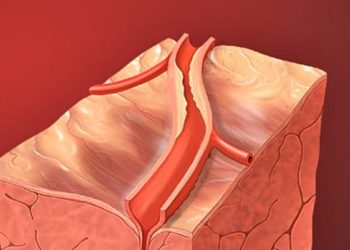Radiologist recommendations often yield significant findings
1. Among patients with abnormal findings on outpatient chest x-ray who subsequently underwent chest computed tomography (CT) based on radiologist recommendations, a substantial percentage of abnormalities requiring treatment or further diagnostic work-up was detected.
Evidence Rating Level: 2 (Good)
Study Rundown: Chest x-ray is the most common radiologic study performed in the United States. While valuable for initial assessment of a wide variety of patient complaints, chest x-rays lack specificity and frequently yield recommendations for additional imaging (RAIs). In an evolving health care system, radiologists have been under increased pressure to use diagnostics responsibly, and RAIs have been criticized as a form of self-referral without significant impact on patient care. To date, little work has been done to define the utility of RAIs on patient outcomes. In the present study, researchers retrospectively examined reports from all outpatient chest x-rays performed during a one-year period to identify recommendations for follow-up chest CT and determine how often those scans yielded clinically-valuable information. Results showed that, though RAIs were relatively uncommon, nearly half resulted in clinically relevant chest CT findings, including new cancer diagnoses. Images from older patients and patients with a history of smoking were more likely to receive RAIs. Limitations of this study included its performance at a single academic medical center with a majority of specialists referring cases, which may limit the generalizability of the findings. Additionally, this study did not capture the results of follow-up imaging performed at outside institutions, which may have affected the rate of significant findings.
Click to read the study in Radiology
Relevant Reading: Routine chest radiography in a primary care setting
In-Depth [retrospective cohort]: This study evaluated hospital imaging records over a one-year period at a single institution. All chest radiographs performed during the study period were identified using standard billing codes. RAIs were identified using text analysis software, and the presence of any relevant follow-up chest CT was identified manually for each patient. Abnormalities detected by follow-up imaging were categorized as clinically relevant or not based on whether additional work-up or treatment was required. Of the 29 138 chest radiographs identified, 4.5% (CI95% 4.3-4.8%) contained findings that generated a recommendation for follow-up chest CT. The observed follow-up rate was high. Among patients that underwent chest CT, the rate of identification of clinically relevant abnormalities was 41.4% (CI95% 37.7-45.2%). Of these, 8.1% (CI95% 6.2-10.4%) represented a previously-unknown cancer, 73.2% of which were lung cancer. The most common lung malignancy was adenocarcinoma. Elderly patients and smokers were recommended for further imaging at a higher rate, while those who initially received chest x-rays for a clinical indication of fever received fewer recommendations.
More from this author: Targeted MRI may improve sensitivity for multiple sclerosis diagnosis, Patients report persistent quality-of-life impairments following ruptured brain aneurysms, Shear-wave elastography may improve prostate cancer detection, 7 tesla breast MRI may improve assessment of suspicious masses, VEGFR-targeted ultrasound may improve detection of pancreatic cancer
Image: PD
©2014 2 Minute Medicine, Inc. All rights reserved. No works may be reproduced without expressed written consent from 2 Minute Medicine, Inc. No article should be construed as medical advice and is not intended as such by the authors, editors, staff or by 2 Minute Medicine, Inc.







